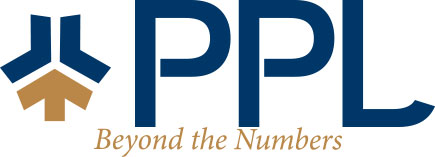Ever feel like time is passing by in a flash? The passing days and change in seasons usually signals the end of the year is near. Are you ready to take on tax planning for the end of 2020? PPL is here to help by providing some planning tips for you.
Contribute to a Health Savings Account (HSA)
If you are enrolled in a high-deductible health insurance plan (HDHP), as defined by the government, you may be eligible to participate in an HSA. However, not all high-deductible plans qualify for an HSA. When evaluating health insurance plans look for plans labeled HSA eligible. If you already have a plan, check with your insurance agent or employer to see if it is HSA eligible.
One of the biggest benefits of HSAs are their tax advantages. HSA contributions are either pre-tax (if through an employer) or tax-deductible (if you opened your own), they grow tax free, and withdrawals for eligible expenses are not taxed. You can contribute up to $3,550 for self-only plans (2020 limits), and up to $7,100 for family plans, with an additional $1,000 catch-up contribution allowed for individuals over the age of 55. Another benefit is that funds rollover from year to year if you do not spend them.
Consider Maximizing Retirement Contributions
There are two main benefits of 401(k) Plans. The first is your retirement savings will grow either tax free or tax deferred, depending on if you participate in a Roth 401(k) or traditional 401(k) Plan. The second is that many employers offer matching contributions, up to set limits. This is an immediate tax deferred return on investment.
If you participate in a traditional 401(k) Plan, contributions are pre-tax, which reduces this year’s taxable income. You do not pay taxes on the money until you make withdrawals from the plan. Since contributions are not counted toward your taxable income, this could lower your effective tax rate.
If you participate in a Roth 401(k), contributions are post-tax, which means you pay tax on your contributions in the year you make them, but the monies grow tax free. Withdrawals from a Roth are not taxed, within certain guidelines.
The IRS allows employees to contribute $19,500 in 2020 with a $6,500 catch-up contribution for employees ages 50 or older.
Consider Making Your Charitable Donations Through a QCD
Charitable contributions are a wonderful way to support causes that are important to you. A Qualified Charitable Distribution (QCD) is a direct transfer of funds from your IRA custodian to a qualified charity. Unlike a regular withdrawal from an IRA, a QCD is excluded from taxable income. Many types of IRAs are eligible for QCDs (traditional, rollover, inherited, inactive SEP and SIMPLE plans), but there are a few requirements, one of which is that you must be 70 ½ or older. Contact us to find out more about the benefits and requirements of making a QCD.
Consider the $300 Tax Break for Charitable Giving
Until recently, only taxpayers that itemized their deductions on their Federal tax returns benefited from donating to charity. Earlier this year, as part of the CARES Act, Congress passed a measure to allow taxpayers who do not itemize to deduct up to $300 in cash donations. In other words, even if you do not itemize, up to $300 of cash donations to qualified organizations will reduce your taxable income.
______________
These are few tips for you to make the most of your end-of-the-year planning. Contact us to have a more in-depth discussion on tax planning!

